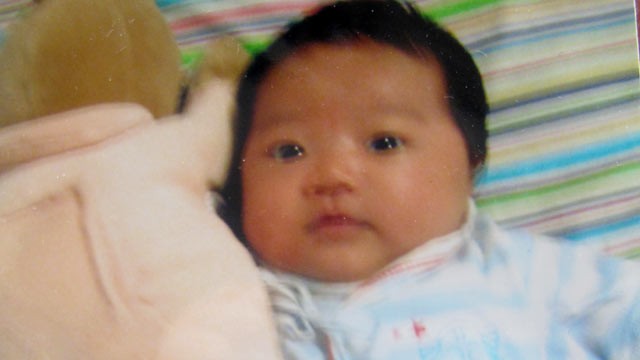- HOME
- PAIN NEW GDPR POLICY
- ABOUT US
- MEET THE VOLUNTEERS
- New Tab
- PAIN MISSION STATEMENT
- CONTACT US
- LINKS
- My Page
- Members
- Videos
- Forum
- Blogs
- Chat
- Photos
- slideshare documents
- PAIN CASES IN THE PRESS
- Slideshare family court
- PERCEIVED CHILD ABUSE
- SAFEGUARDING
- HUMAN RIGHTS
- TESTIMONIALS
- PAIN PODCAST ALISON
- SOUTHSIDE PODCAST ALISON
- SOUTHSIDE PODCAST 3
- PAIN PODCAST 4 ALISON
- PAIN PODCAST 5 ALISON
- SOUTHSIDE PAIN PODCAST
- BBC RADIO 4 ALISON
- Alison BBC Radio Leicest
- Accused Mum sets up grou
- Parents accused
- False allegations
- CLEAR MY NAME
- MY CASE
- Branded Mum bounces back
- MONTHS OF TORMENT
- Heartache i want my chi
- PARENTS JOY
- PAIN CASE CONFERENCE NOT
- PAIN ADVICE SHEET
- Data protection LETTERS
- MY VIDEO
- FLORENCE BELLONE SPECIA
- CHRIS SMITH PODCAST
- PUBLIC LAW OUTLINE
- FAMILY COURT JUDGMENTS
Parents Against Injustice
Parents Against Injustice
Annie Li: Shaken Baby Case Highlights Difficult Diagnoses
Annie Li: Shaken Baby Case Highlights Difficult Diagnoses

The death of Annie Li, a 2-month-old infant born to Chinese immigrants living in Queens, N.Y., has highlighted the hard-to-spot signs of shaken baby syndrome and the role of doctors in deciphering them.
Li died in 2007 five days after her parents brought her to emergency room with a fractured skull, brain and eye injuries, two broken legs and a fractured rib, as first reported by the New York Times. Investigators ruled her death “homicide by shaking and blunt impact of the head,” landing her parents, 27-year-old Li Hangbin and 26-year-old Li Ying, in prison.
But some experts say the signs of shaken baby syndrome are far from clear-cut, and that other conditions can mimic the bruising, bleeding and fractures typical of abuse. For the doctors charged with uncovering what happened, the fear of falsely accusing parents or missing signs of true abuse weighs heavily.
“In most cases — maybe 80 to 90 percent — somebody hurt the child intentionally. The trouble is, most is not good enough,” said Dr. Michael Laposata, pathologist-in-chief at Vanderbilt University Medical Center in Nashville. “You’ve got to get it right. Either way — underdiagnosis or overdiagnosis — there’s no room for error.”
Li’s parents maintain their innocence. They say their daughter lost consciousness while feeding, and they tried to save her with chest compressions and mouth-to-mouth. Pressed to provide an explanation for her head injuries, the father Li said her head might have hit the nightstand during the commotion, the New York Times reported.
Laposata, an expert on bleeding disorders, said some doctors can be quick to suspect abuse without ruling out other possibilities.
“They look at a bruised child and say, ‘Somebody’s going to pay.’ But if a bruise occurs because of bleeding disorder, you must differentiate that from an intentional injury.”
An infant with a bleeding disorder, Laposata said, could develop a brain bleed from a minor bump to the head. In the case of Annie Li, friends of the parents suspect she might have had osteogenesis imperfecta, a rare and sometimes hereditary condition that causes extremely fragile bones.
“It would be important to understand other inherited conditions in Annie’s family that might have created a situation that looked like shaken baby syndrome but was, in fact, attributable to something else,” said Dr. Sessions Cole, director of newborn medicine at St. Louis Children’s Hospital. “Babies with osteogenesis imperfecta may have bleeding in the brain, especially if the condition was not recognized prior to birth and the babe was delivered vaginally.”
The three most cited signs of shaken baby syndrome are bleeding in between the brain and skull, bleeding in the retina and brain swelling.
“The difficulty is that shaking a baby may result in that triad. But there are other conditions that mimic that triad, and may therefore be confused with shaken baby syndrome,” Cole said. “I’d like to be able to say it’s a crisp diagnosis but that’s just not true.”
Instead, Cole said there is an unresolved debate over the so-called unambiguous characteristics of shaken baby syndrome.
A 2011 investigation by ProPublica, PBS “Frontline” and NPR identified 23 cases in the United States and Canada in which parents or caregivers were accused of killing children based on medical investigations and later cleared.
“People think an autopsy is the definitive test, but may be too late,” said Vanderbilt’s Laposata, who has reviewed cases falsely labeled as shaken baby syndrome when the child actually had a bleeding disorder. “If the child is dead, you can’t do any blood-clotting tests.”
Related articles
- The Shaky Science of Shaken Baby Syndrome (healthland.time.com)
© 2025 Created by Alison J Stevens.
Powered by
![]()

You need to be a member of Parents Against Injustice to add comments!
Join Parents Against Injustice